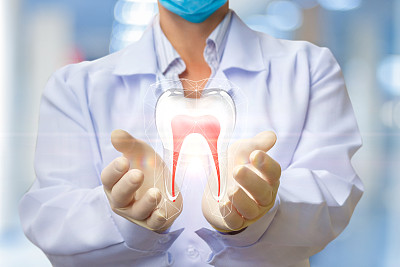A Comprehensive Guide on What to Expect When You Need to Extract a Tooth and Recover Effectively
Summary: This comprehensive guide delves into tooth extraction, providing a detailed overview of what to expect during the procedure and how to recover effectively afterward. Tooth extraction may be necessary for various reasons, such as decay, crowding, or infection. In this article, we cover key aspects of the extraction process, including the reasons behind tooth extraction, the procedure itself, post-extraction care, and what to anticipate during recovery. With proper information and preparation, patients can navigate this experience with confidence, ensuring a smoother recovery and a healthier smile.
1. Reasons Behind Tooth Extraction Procedures

Tooth extraction can be a crucial component of dental care, and understanding why it’s needed is vital for patients. One of the primary reasons is severe tooth decay, which can lead to an inability to save the tooth through fillings or root canals. When a tooth is extensively damaged, extraction may be the best option to prevent further complications.
Another common reason for tooth removal is overcrowding. In orthodontics, some teeth may need to be extracted to make space for others during braces treatment. This can help in achieving a properly aligned smile; thus, extraction is a preemptive measure often preferred by dental professionals.
Infections posing a risk to overall health can also necessitate tooth extraction. If a tooth becomes infected and antibiotics do not resolve the issue, the dentist might recommend extraction to eliminate the source of infection and prevent it from spreading to neighboring teeth or tissues.
2. Understanding the Tooth Extraction Procedure
The actual procedure for tooth extraction is typically straightforward, but patients should know what to expect. First, a local anesthetic is administered to numb the area around the extraction site, minimizing discomfort during the procedure. If the extraction is more complex, sedation may be provided to help the patient relax.
Next, the dentist will use specialized tools to loosen the tooth from its socket. For teeth that are impacted or positioned irregularly, surgical extraction may be necessary, involving incisions in the gum tissue to facilitate the removal of the tooth.
The entirety of this process generally lasts about 30 to 60 minutes, depending on the complexity of the extraction. Post-procedure, patients will be given aftercare instructions that are crucial for effective recovery. Knowing what to expect during the extraction can help alleviate anxiety and prepare individuals for the operation.
3. Caring for Yourself After Tooth Extraction
Post-extraction care is critical to ensure a smooth recovery and prevent complications. Initially, patients are advised to bite down on gauze for about 30 to 45 minutes to help stop any bleeding. It’s essential to follow your dentist’s guidelines about changing the gauze and monitoring for excessive bleeding.
Patients should also be mindful of what they eat and drink in the days following extraction. Soft foods, such as yogurt, applesauce, and mashed potatoes, are recommended, and hot or spicy foods should generally be avoided. Staying hydrated while avoiding using straws is also advised, as suction can dislodge the blood clot vital for recovery.
Additionally, pain management is often necessary. Dentists typically prescribe pain relief medication or recommend over-the-counter options to help with discomfort. It’s critical to adhere to the advised dosage and schedule for medications to manage pain effectively without overmedicating.
4. Anticipating a Smooth Recovery Timeline
The recovery timeline following a tooth extraction can vary, depending on the complexity of the procedure and the individual’s health. Most people can expect to feel significant improvement within the first few days; however, some symptoms, such as slight swelling or discomfort, may persist for up to a week.
During the first 48 hours, it’s normal to experience some swelling and bruising, which can peak around the second day. Ice packs applied to the outer cheek can minimize swelling and provide relief in these initial hours.
As the healing process progresses, patients should ensure they maintain proper oral hygiene without disturbing the extraction site. Gentle rinsing with warm salt water can help reduce inflammation. It’s important to follow up with your dentist for any prescribed check-ups to ensure the healing is progressing well.
Summary:
Tooth extraction can feel intimidating, but understanding the reasons, procedure, post-operative care, and recovery expectations can significantly ease concerns. Preparing diligently and following the care guidelines can lead to a smoother recovery experience, ensuring that patients can return to their routine and oral health maintenance as quickly as possible.
This article is compiled by Vickong Dental and the content is for reference only.



